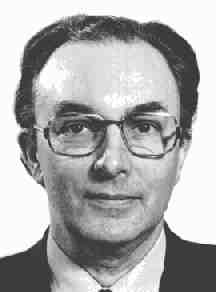
|
Lawrence Henry Cope JP, PhD, FIM, MWeldI, FRNS
1924 - 1978

|
Lawrence Henry Cope JP, PhD, FIM, MWeldI, FRNS
1924 - 1978
|
Lawrence Cope applied his skills as a professional research metallurgist to the study of the composition of Roman coinage alloys. His pioneering work established the true compositions of a large number of coins and linked these to the monetary policies which led to their issue. His studies also provided evidence of the methods used in fabrication of the coins. He wrote :
None of the Burton Latimer coins could be spared for the destructive metallurgical analysis that he knew was necessary to fully understand their composition. However, by the mid 1960's he had acquired enough sample coins to allow him to start such analyses. Over the next twelve or so years he carried out chemical analysis of over 1000 coins of the Roman Empire covering the period from a few years BC to just after 400 AD. His findings were presented at various conferences and published in around 30 articles in a number of specialist journals. See bibliography. Prior to his work there was no substantially comprehensive and authorative survey of the chronological variations in the compositions of the different metals and alloys of the Roman Imperial coinage. This original research provided the basis for his thesis which led to the award of a Ph.D. in 1974 by the Council for National Academic Awards through the Department of Chemistry, Liverpool Polytechnic (now known as Liverpool John Moores University). His work was mainly self-funded but also supported by five research awards from the British Academy and by the generosity of numerous museums and individuals who donated the coins he analysed. Largely at his suggestion the Royal Numismatic Society set up a Scientific Research Committee in 1976 to collect information on and encourage scientific projects related to coinage, and he was its first chairman. His programme of research was curtailed by his early death aged 54, and subsequently his coin samples, analysis results and most related papers were deposited with the Department of Coins and Medals at the British Museum. In 1997 the British Museum published Occasional Paper 120 "Metal Analyses of Roman Coins Minted under the Empire" which brought most of his analysis results together in one place and provided a commentary on his work in the light of further research since his death. Some papers remain in the family and have been used in the creation of this web-site and also a detailed account of his work as revealed through his correspondence which is available to download from here. Numismatic research was just one aspect of a busy life that also included a full-time career, family, church leadership and service as a magistrate. |